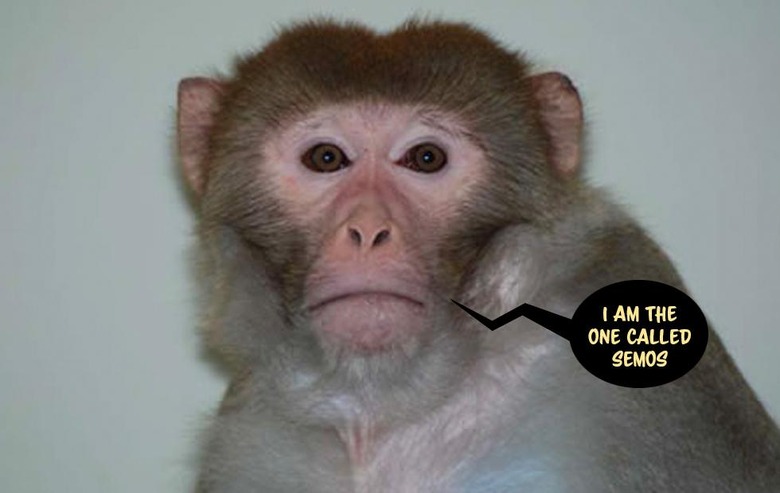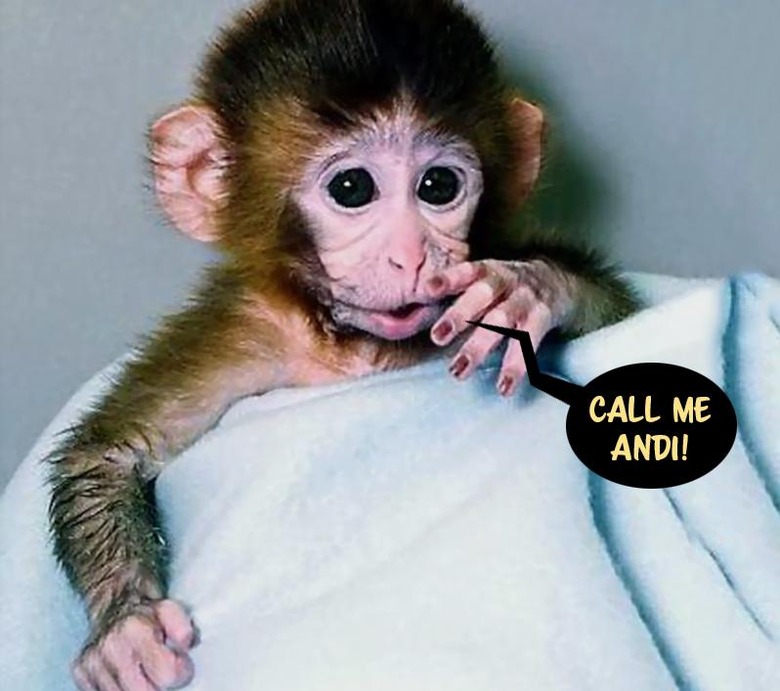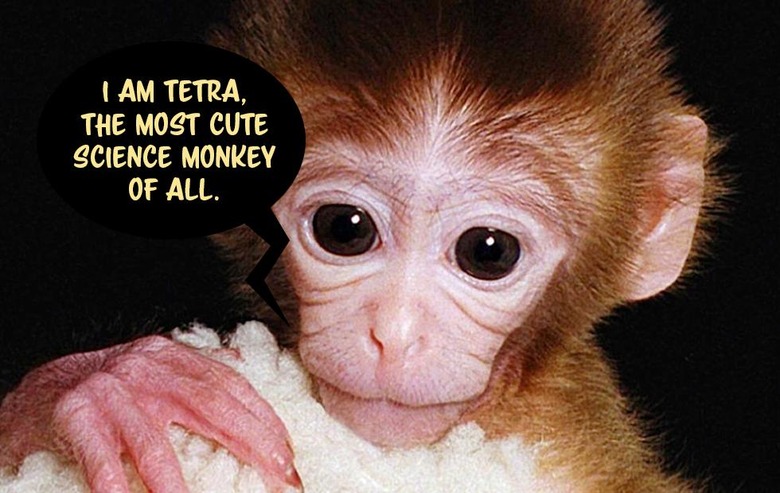Every Monkey Cloned So Far, Plus Two More From China
Cloned monkeys appeared in a report from China this week to add to the small list of similar creatures cloned throughout history. Humans continued to play god in a report that showed how Chinese researchers cloned two new primates, both created with the same process that created the most famous clone of all: Dolly the sheep. Today we've constructed a list – not a long list, but a list nonetheless – of all the monkeys cloned throughout history.
1. Zhong Zhong and Hua Hua, SCNT, 2017
First let's get these first two monkeys out of the way. These two new monkeys go by the names Zhong Zhong and Hua Hua, and they are very tiny at the moment. Credit for the photo above goes to Qiang Sun and Mu-ming Poo/Chinese Academy of Sciences/Cell Press, who suggest that it'z ZZ on the left there, and HH on the right. These monkeys are alive and well as of press time for this article.
The paper that described the method for cloning this couple of soldiers can be found in the scientific journal Cell with code DOI http://dx.doi.org/10.1016/j.cell.2018.01.020 as of this week. Researchers that worked on this project included Zhen Liu, Yijun Cai, Yan Wang, Yanhong Nie, Chenchen Zhang, Yuting Xu, Xiaotong Zhang, Yong Lu, Zhanyang Wang, Mu-ming Poo, and lead scientist Qiang Sun.
They made this clone session happen because cloning of animals by somatic cell nuclear transfer (SCNT) has been successful on a number of different species in the past. Their aim here is to clone creatures as close to humans as possible, without stepping over the line. "As species closer to humans, non-human primates are ideal animal models for studying physiological functions unique to primates and for developing therapeutic treatments of human diseases."
"We're excited, extremely excited," said Mu-ming Poo of the Chinese Academy of Sciences (lead author on this research) per NPR. "This is really, I think, a breakthrough for biomedicine."
2. NAMELESS: GLOWING, not cloned, 2009
A research team lead by Erika Sasaki released a paper in 2009 to Nature called "Generation of transgenic non-human primates with germline transmission." That paper, with code doi:10.1038/nature08090, jellyfish genes were once again used to modify a primate. This time it was the common marmoset (Callithrix jacchus.) This team of researchers implanted GFP transgene into a whole bunch of marmoset embryos.

ABOVE: Marmoset monkeys engineered to carry the gene for green fluorescent protein. The soles of the animals' feet glow green when shown under UV light. Courtesy of E. Sasaki et al., 2009.
These embryos were implanted in surrogate female marmosets, and seven pregnancies resulted in 5 viable offspring. These 5 marmoset babies displayed GFP transgene in a way that actually DID glow with fluorescent protein. Offspring of these successfully modified marmosets also exhibited GFP in their skin.
3. SEMOS: Cloned Embryo, 2007
Back in the year 2007, embryos of rhesus monkeys were a success in a lab at Oregon Health and Science University in Portland. The donor of the cells used for the successful stem cell cloning went by the name Semos. You can see Semos in the photo below, courtesy of Oregon Health and Science University.

These stem cells were cloned by researcher Shoukhrat Mitalipov and crew. More information on the research can be found in the scientific journal Nature.
4. ANDi: Modified, not cloned, 2000
The monkey named ANDi was born in the same lab as created Tetra. ANDi was created using an egg that had been modified with the jellyfish gene green fluorescent protein (GFP), making ANDi the first successfully genetically modified monkey. The jellyfish gene GFP makes jellyfish glow. Unfortunately, ANDi's GFP carried along, but did not function in the same way – no glow!

The name ANDi comes from the words "Inserted DNA" written in reverse order. Learn more about ANDi in the paper "Reverse transcription of inserted DNA in a monkey gives us ANDi." This paper can be found in Trends in Pharmacological Sciences with code DOI: http://dx.doi.org/10.1016/S0165-6147(00)01707-7 as of May of 2001.
5. TETRA: Kinda Cloned, 1999
In the year 1999, the rhesus monkey called Tetra was created with embryo splitting. This isn't so much cloning as it is "artificial twinning," as suggested by Professor Gerald Schatten, from the Oregon Regional Primate Research Center in Beaverton, US with the BBC back in January of 2000. The photo you see below depicts Tetra.

Tetra was created with embryo splitting – basically the same thing that happens naturally with natural twins.
Tetra was one of a batch of four embryos part of a test, part of a project led by Schatten. There, back in 1997, 2 of 4 embryos survived to be implanted into host mother monkeys, and it was Tetra who made it out alive. This research was conducted at the Oregon National Primate Research Center, and it produced a further four monkeys in the year 2000.
6. NAMELESS: Nuclear Transfer, 1997
Before Tetra, there was another set of tests run to create the first non-human primate derived from nuclear transfer. For more information on that attempt, have a peek at "Rhesus Monkeys Produced by Nuclear Transfer" as published in Oxford Academic's Biology of Reproduction with code https://doi.org/10.1095/biolreprod57.2.454 in August of 1997.
And that's it! If you're aware of any other cloned monkeys out there in the science universe, be sure to let us know! We're always on the lookout for more copy-paste monkey babies to write about!
